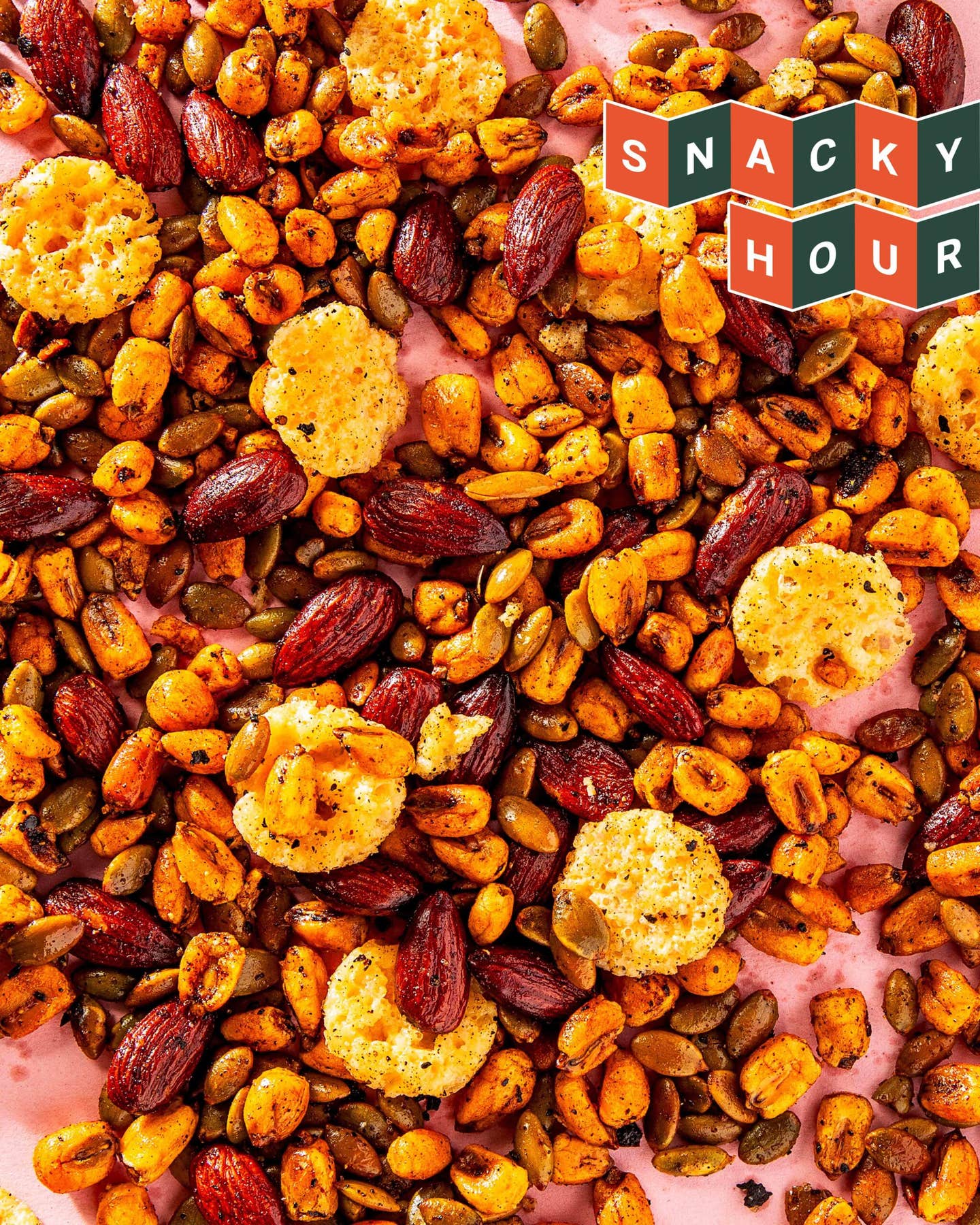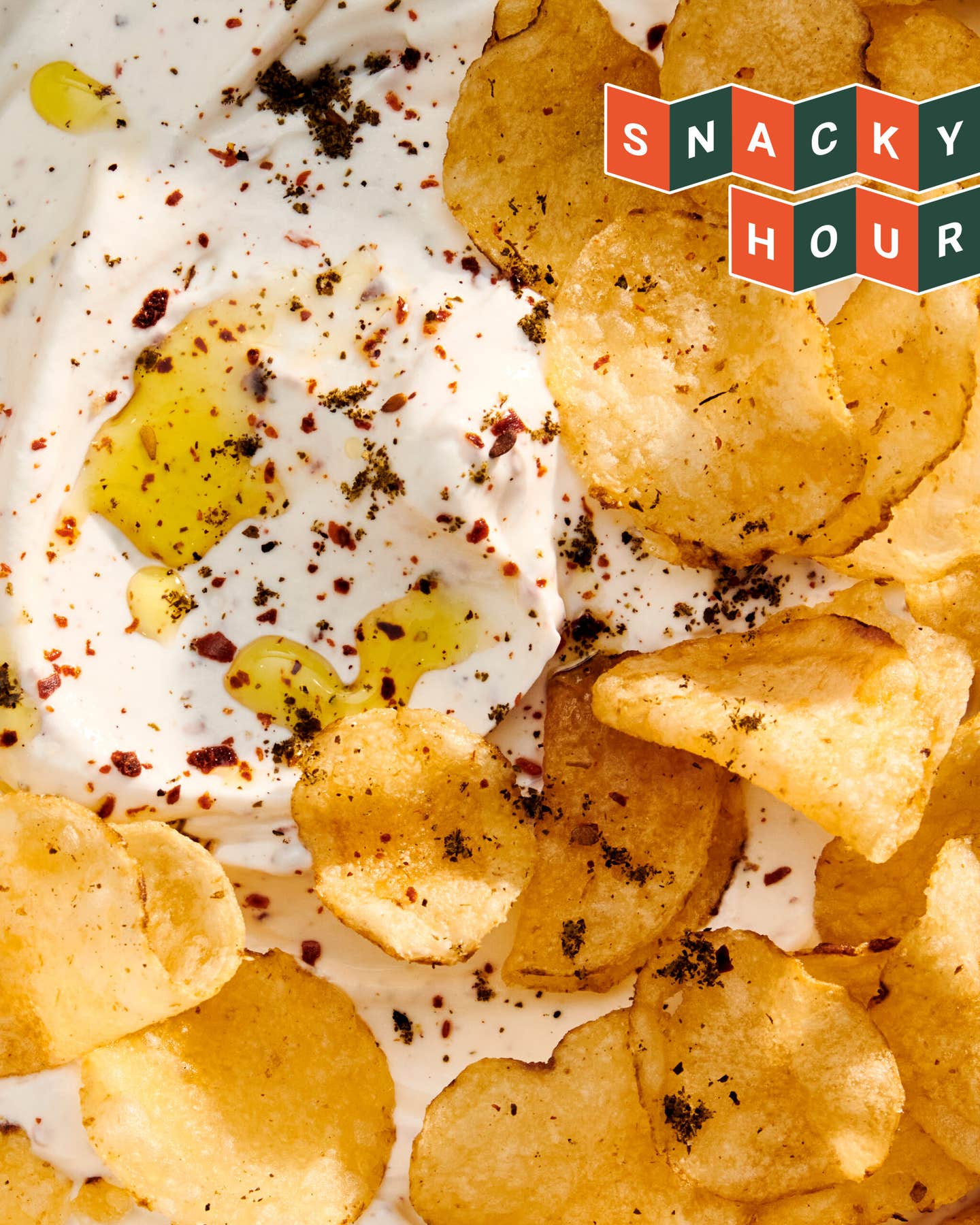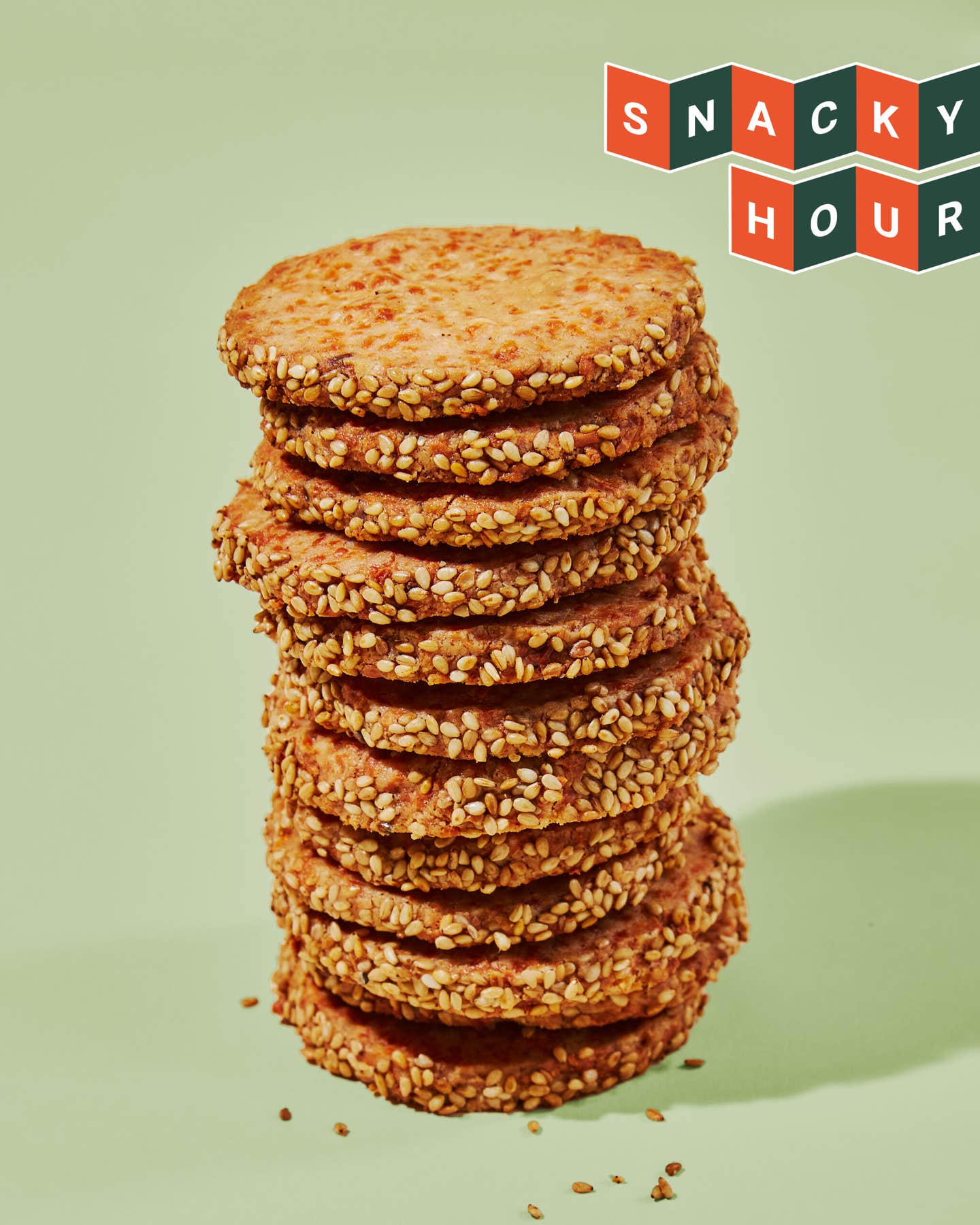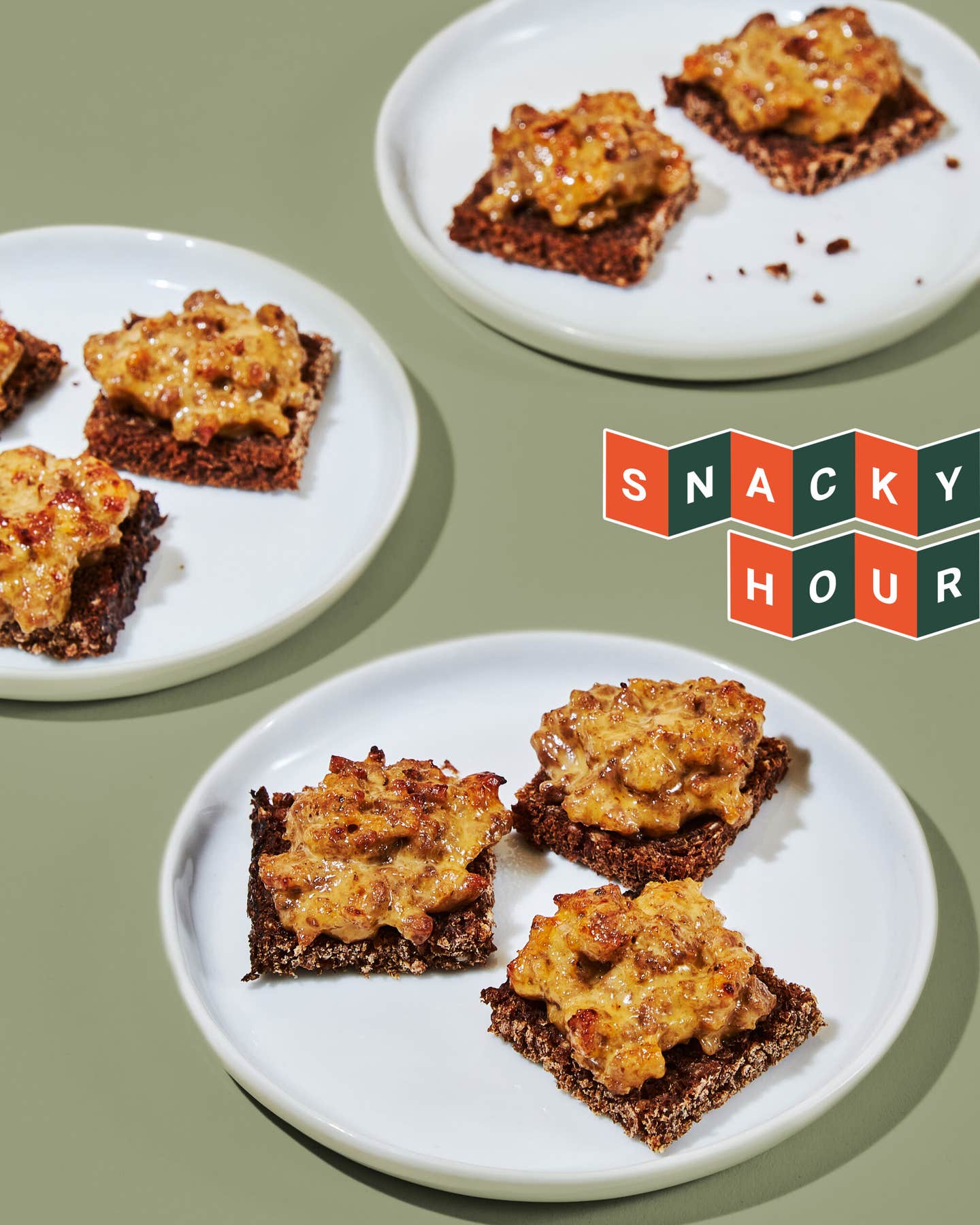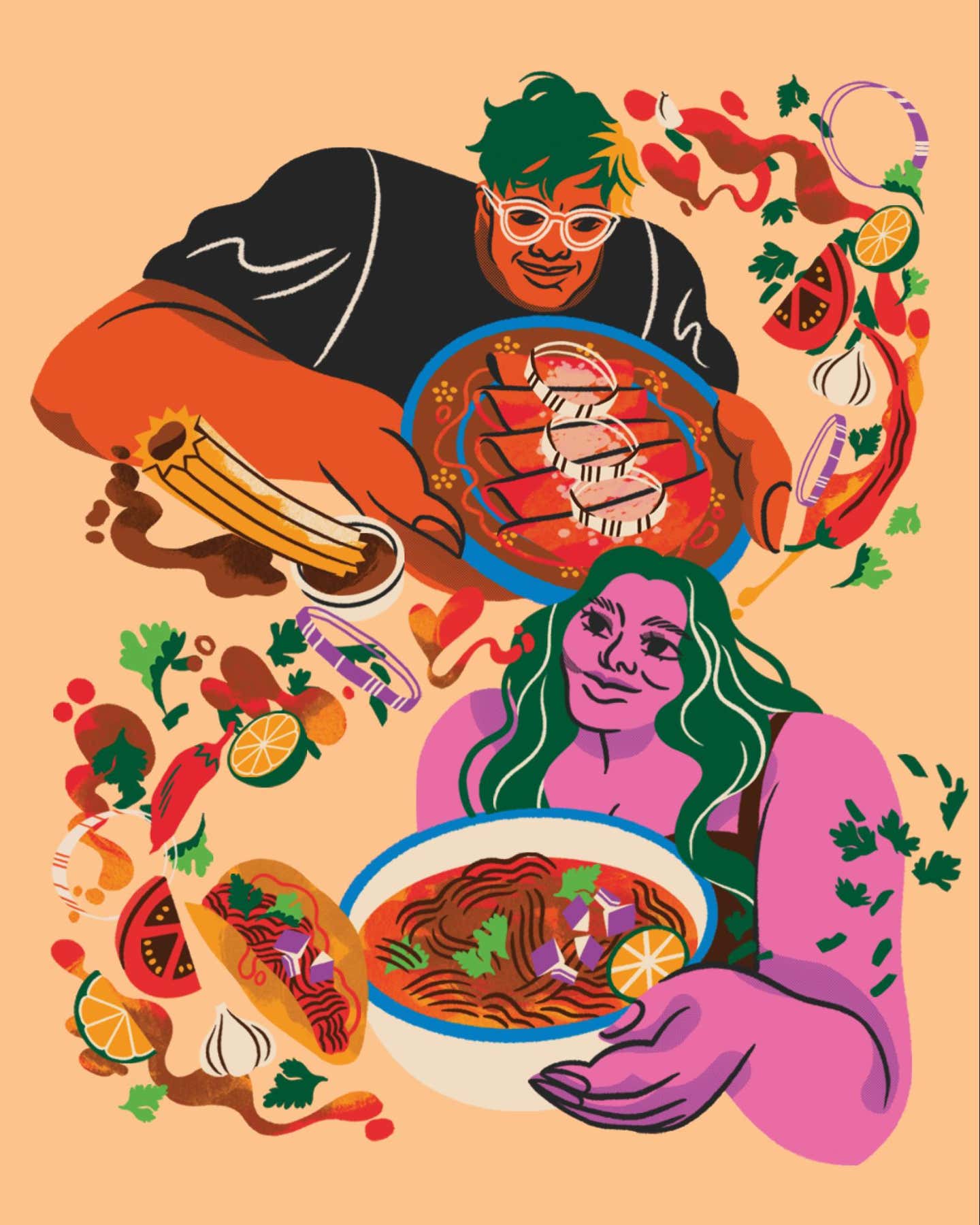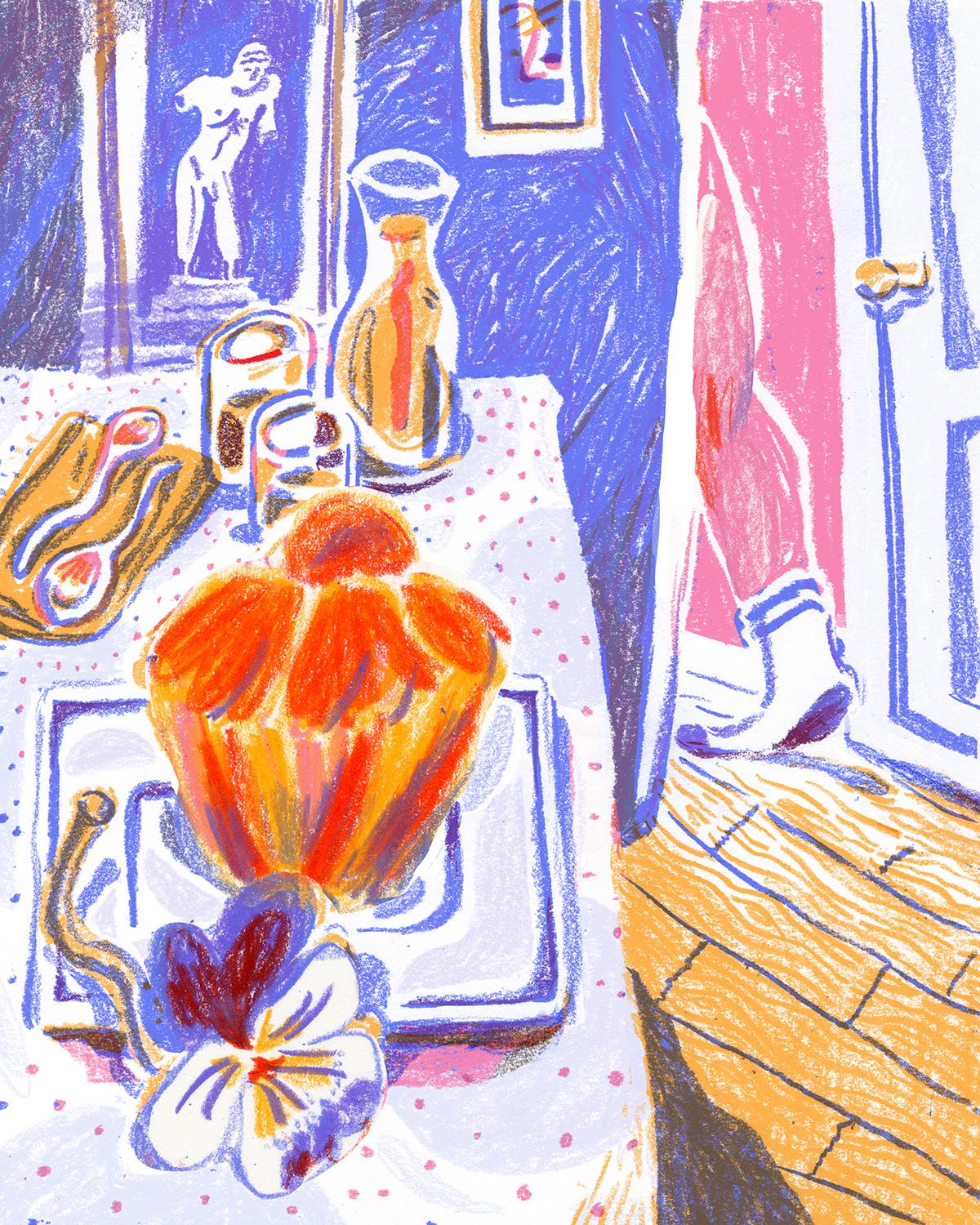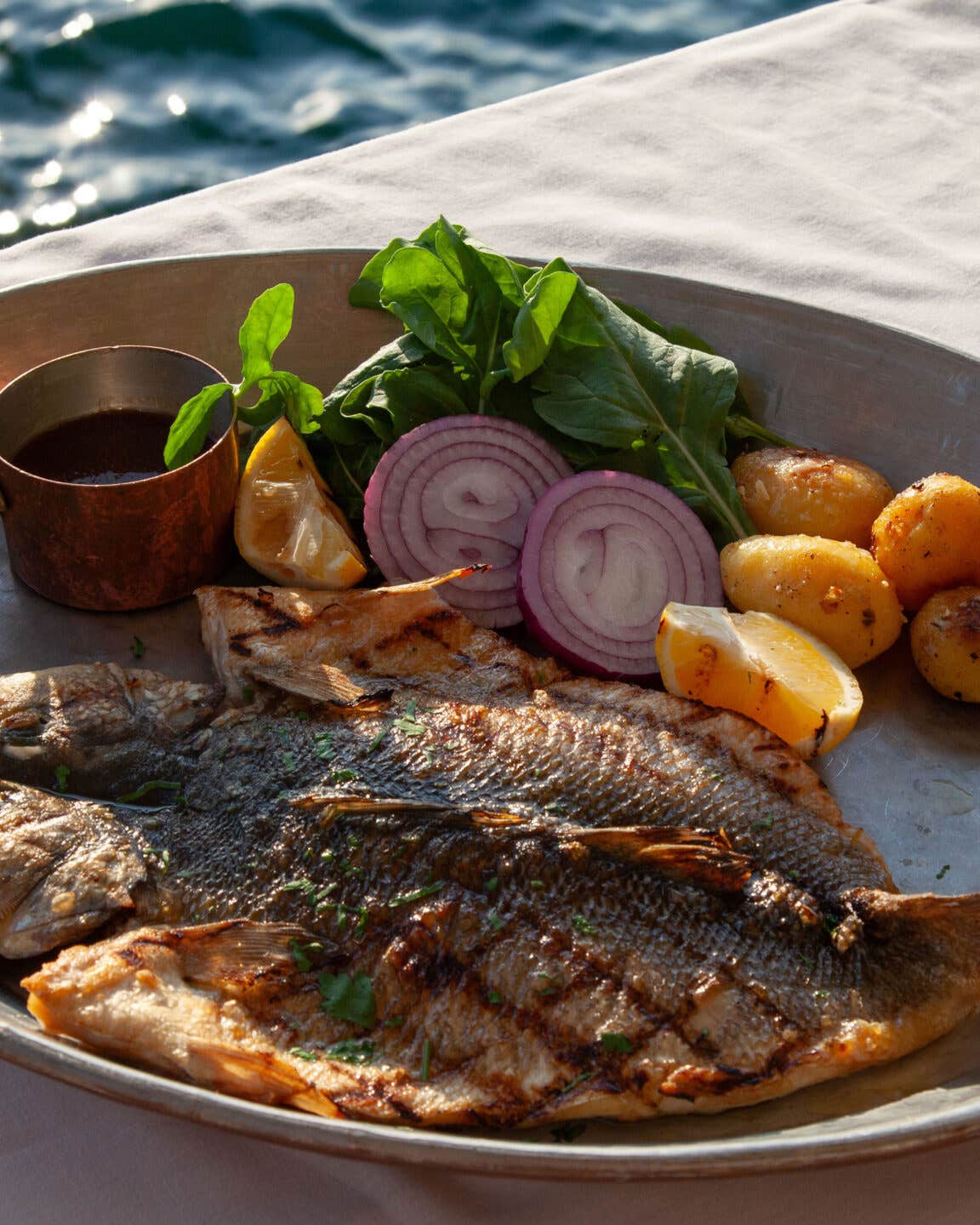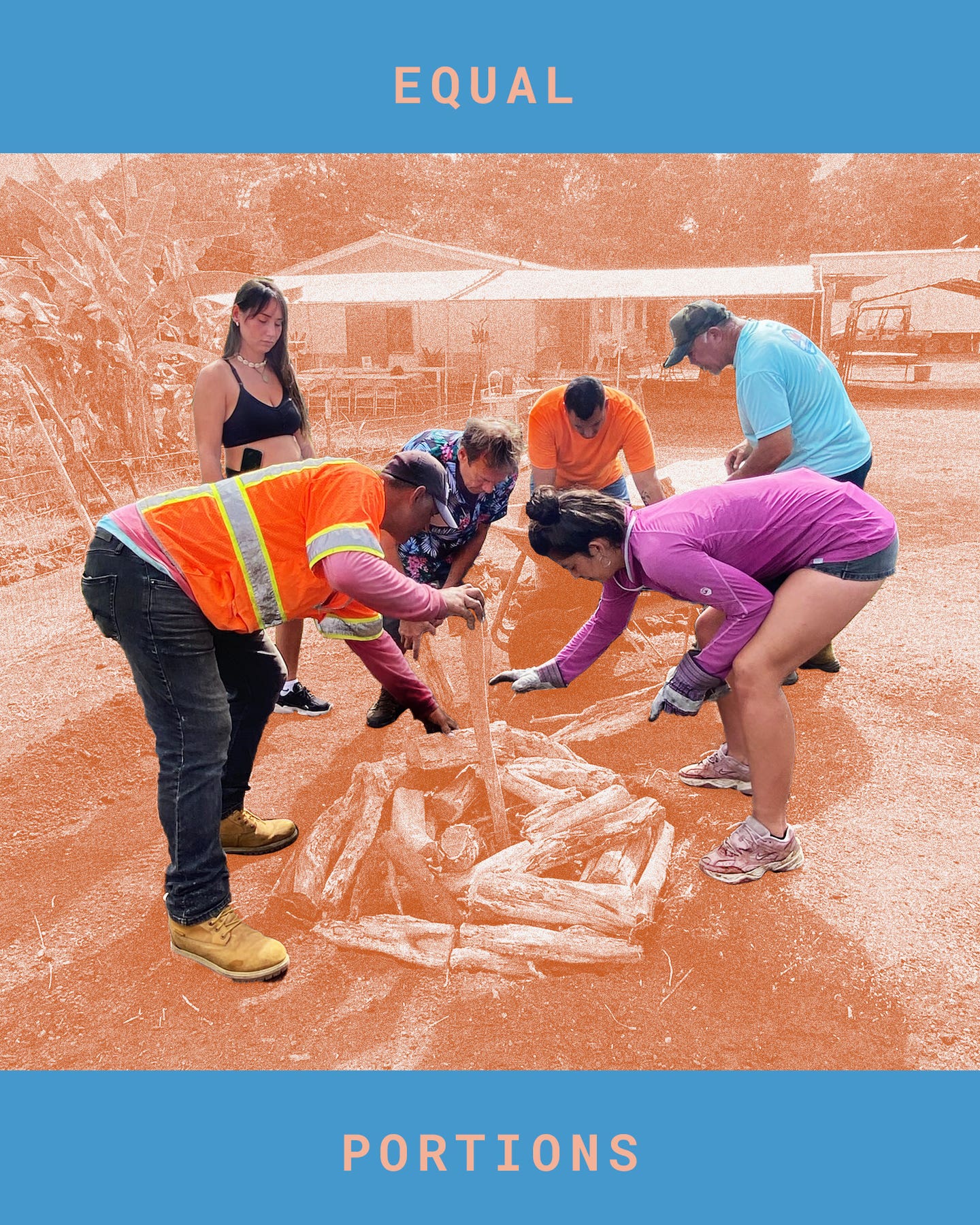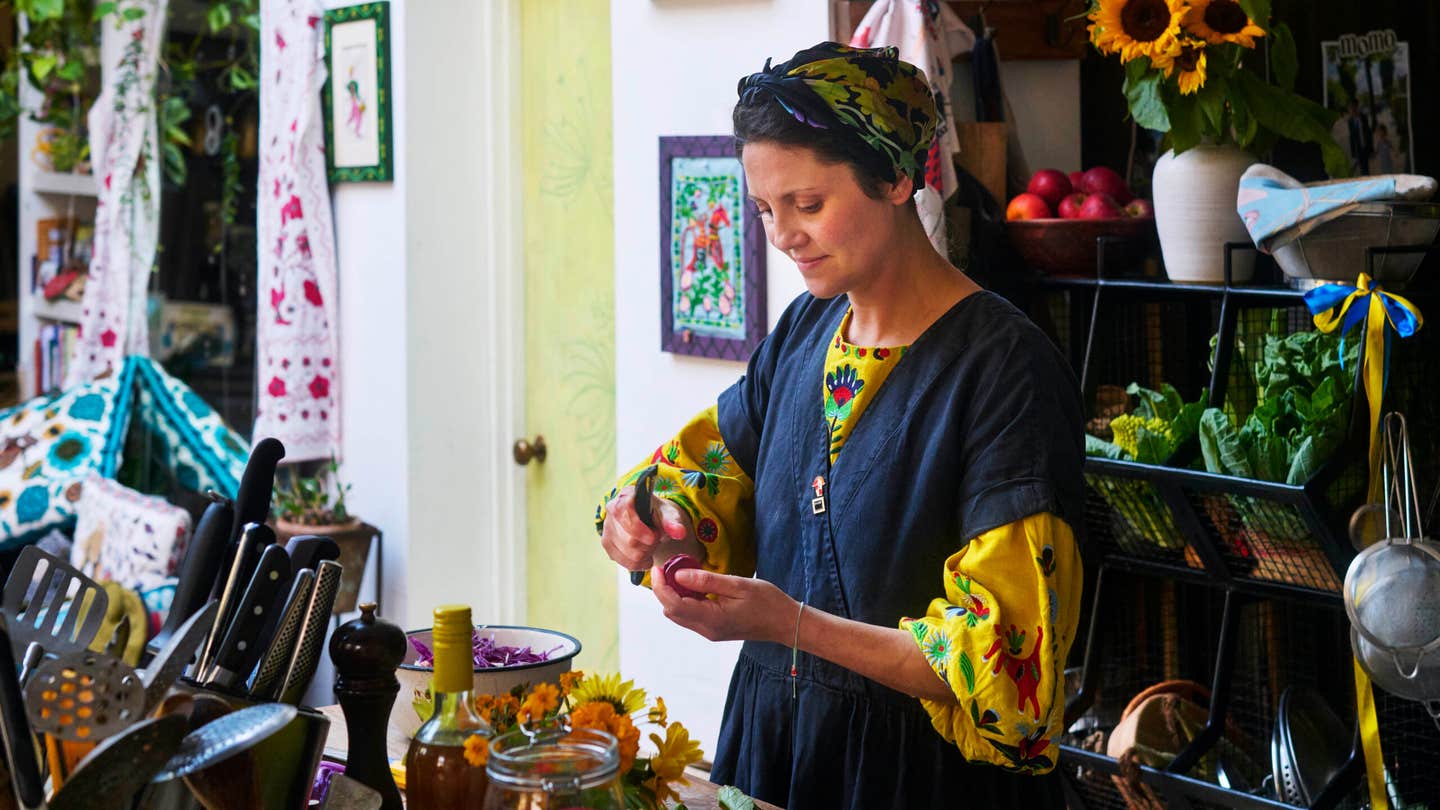The Essential Appetizer of Argentina Is a Sizzling Pan of Melty Cheese
No asado-style feast is complete without a plate of gooey, molten provoleta.
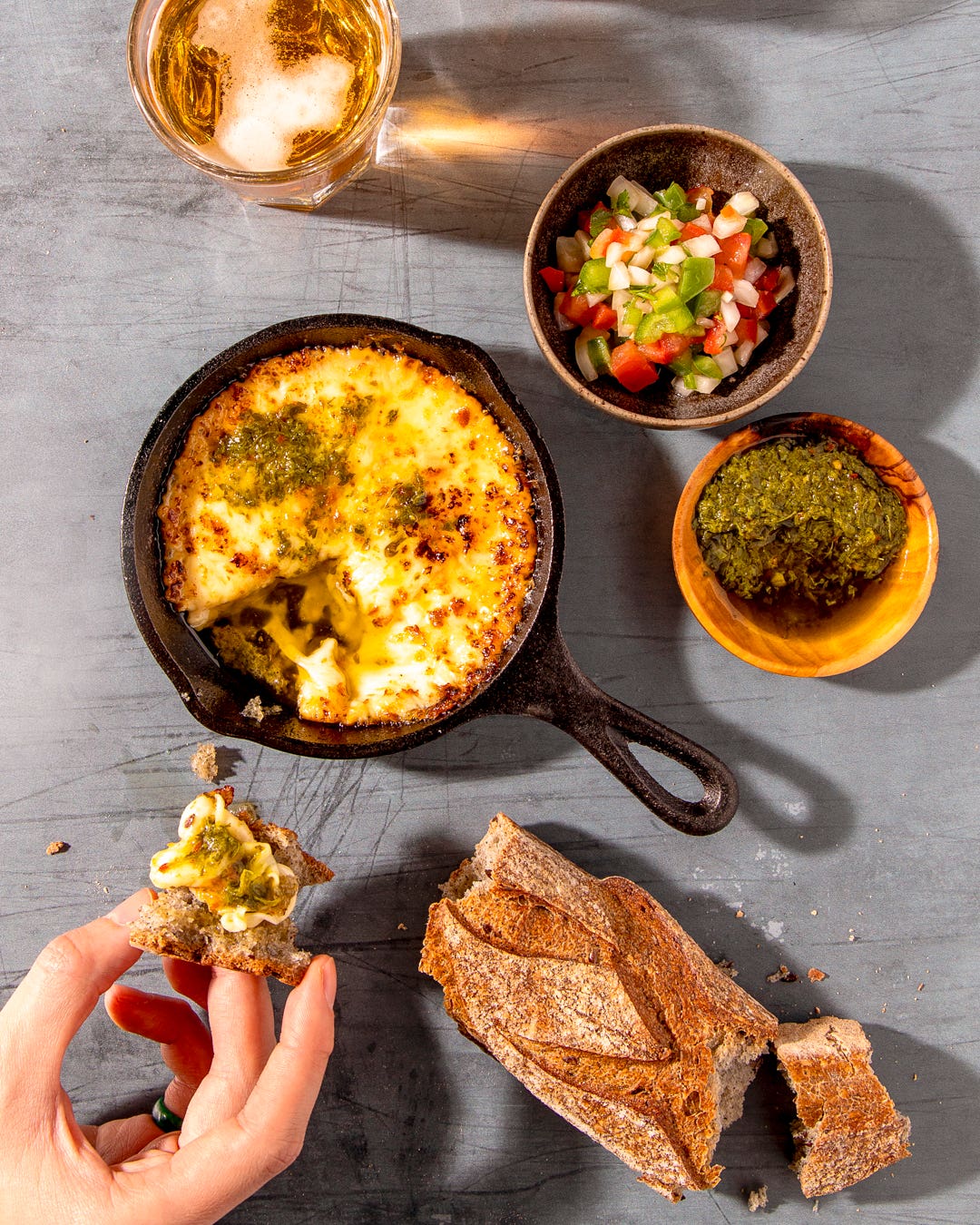
It’s always Snacky Hour somewhere, at least according to snack-obsessed SAVEUR contributing editor Ellen Fort. Follow along as she discovers the best bites that fall outside the confines of breakfast, lunch, or dinner. Savory, salty, spicy, sweet, sour: Everything’s fair game during Snacky Hour.
When I first started dating my husband, we were in our early 20s, living and working in Washington, D.C., a long-standing hub of international cuisine. Of the two of us, I was the more adventurous eater, and therefore the instigator of most of our dinnertime explorations, be it out to the suburbs in Northern Virginia for Korean kalbi and kimchi, or to bustling U Street for Ethiopian doro wat and injera. Luckily, he was open to trying new things, but there were a few peccadillos—mainly a distaste for olives, mushrooms, and pickles. But those things are delicious, and I am persuasive; he soon opened his mind—and palate—to the full range of foods available around the nation’s capital.
When it came time to finally meet his parents, however, I realized there was one specific area of cuisine over which he had more expertise: the Argentine food of his mother’s family, and her hometown in Buenos Aires. I was 22 at the time, and I hadn’t really considered what the food of that southernmost South American country entailed. I’d never been to Buenos Aires (and wouldn’t visit until more than a decade later), and thus had no idea of the abundant Italian, German, French, and Spanish influences that flooded the giant, European-style city.
So when we arrived in Boca Raton, Florida, where his family lived, I paid little mind to what we might eat, imagining grouper or red snapper or some other fish-and-shrimp-forward dishes reminiscent of my childhood vacations to the panhandle. As it turns out, no one in the family is much a fan of seafood, Florida coast be damned. And when the eldest child and prodigal son finally visited from D.C., you can be sure all of the family’s most cherished comfort foods were on the menu.
I experienced all the greatest hits that trip: lemon-spritzed veal Milaneses with mashed potatoes on the side; cheese cannelloni; choripán made with plump, smoky links of Argentine chorizo and drizzled with chimichurri; and empanadas stuffed with ham and cheese, spinach, onions, or—my favorite—a mix of ground beef, hard-boiled eggs, and raisins. And there was always a green salad served with a selection of oil, vinegar, and seasonings so everyone at the table could dress their own (a method that confounded me, the child of a balsamic vinaigrette lover). One of my favorite new dishes, though, was provoleta, a salty, cheesy snack usually served during cocktail hour with my future in-laws alongside white wine and ice-cold vodka martinis.
Provoleta is the name of the low-moisture Argentine cheese (nearly indistinguishable from Italian provolone), though it also generally refers to this simple preparation in which the cheese is melted until the edges are brown and crispy and the inside is stretchy and gooey. The cheese itself was created and introduced by Italian immigrants in the 20th century, where it collided with Argentina’s obsessive grilling culture. It’s often served as an appetizer at an asado, a feast of meats grilled over hot coals, a tradition that began with the legendary gauchos, or cowboys, of the fertile Pampas grasslands.
At my in-laws’ house, it is prepared in a nifty provoletera, a ceramic dish with little round divots about an inch in diameter. True provoleta is hard to come by outside of Argentina, so we drop chunks of nearly identical provolone cheese into the divots, top it with a sprinkle of red pepper flakes and dried oregano, and pop it into the oven until it starts bubbling. We fish the cheese out of oily little pools and stretch it across crusty bread, sometimes with the addition of chimichurri, fresh salsa criolla, or roasted red peppers. Without a provolotera (though you, too, could have one!), a small cast iron skillet or baking dish will do just fine. I ask the deli department at my grocery store to cut me a 2-inch-thick chunk of provolone, then plop the whole thing into a lightly oiled pan before moving it into a hot oven. Because the cheese is so low in moisture, it won’t melt completely, but rather will expand until stretchy and delectably pliable.
We recently traveled to Argentina to visit my husband’s family in Buenos Aires, where we drank espresso, ate gelato, and indulged in plenty of beef and potatoes, as is the norm. And whenever we could, we ordered provoleta with all of its various toppings, each dish devoured as soon as it hit the table. In those many years since I first encountered provoleta in Florida, it’s become part of my own household’s comfort food rituals, one that always reminds me of the time spent getting to know my husband’s family.
Recipe
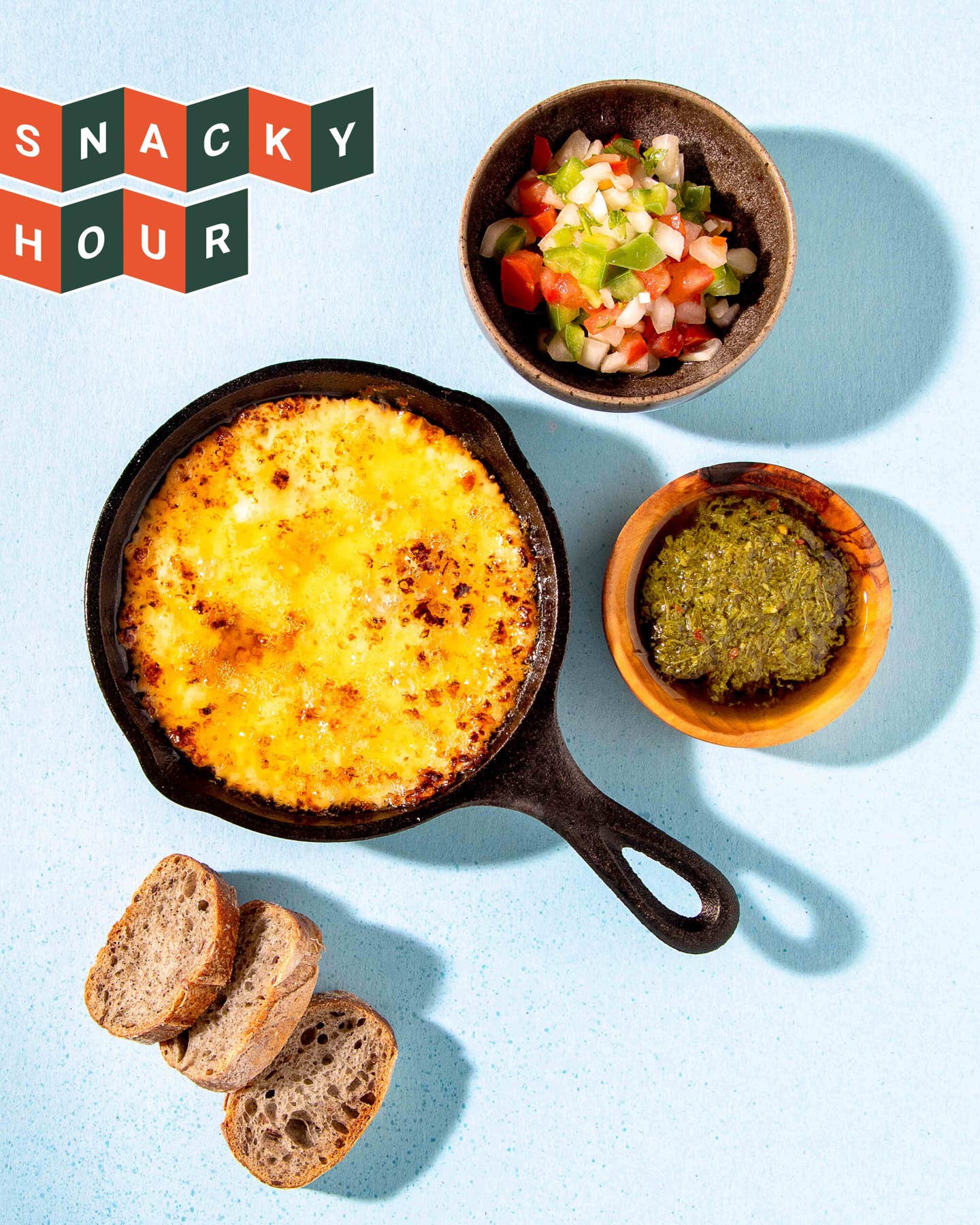
Keep Reading
Continue to Next Story
